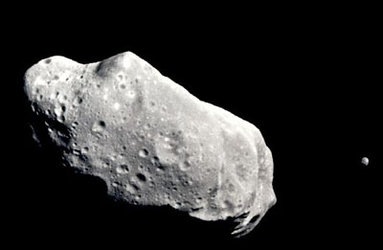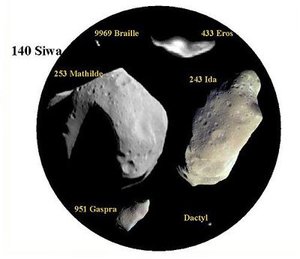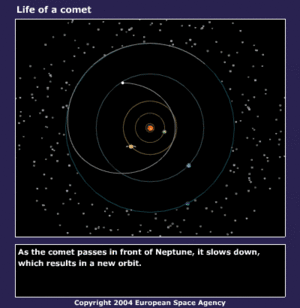Asteroids: Families of asteroids
Many asteroids share similar orbits, which led to the realisation that a process was responsible for this grouping. Many examples of asteroids that follow similar orbits have been discovered and are now classified into 'families'.
With the development of photographic film, and its subsequent application to astronomy during the late 1800s, searching for asteroids became much easier.
They would appear on long-exposure photographs as streaks because of their motion, whereas the stars continued to show up as points of light. It soon became obvious that asteroids littered the Solar System and were not all confined to the asteroid belt.
During the 1930s, two astronomers set up in competition to see who could discover the most unusual asteroid. Those in the main belt usually have more or less circular orbits. However, if the orbit becomes smaller and more elliptical, then asteroids can draw close to - or even collide with - the inner planets.
Eugene Delporte, in Belgium, made the first discovery in March 1932 when he discovered asteroid Amor. This space rock spends over half its orbit outside the main belt and actually crosses Mars's orbit. It comes close to Earth's orbit before heading back out again.
The very next month, Karl Reinmuth, in Heidelberg, discovered Apollo. This asteroid spends much less time in the main belt, spending most of its time inside Mars's orbit. In fact, Apollo crosses the Earth's orbit too.
Since this time, other examples of asteroids that follow similar orbits have been discovered and are now classified into Amor and Apollo families. The fact that many asteroids share similar orbits, leads to the realisation that a systematic process is responsible for 'corralling' them into these positions.
The best theories suggest that gravitational nudges by Jupiter can throw main-belt asteroids into these smaller, more elliptical orbits.
In 1971, the most remarkable family of asteroids were discovered. These are the Atens, named after their prototype, which was discovered by Eleanor Helin. They spend more of their time inside the Earth's orbit and are thus hidden from us by the glare of the daytime sky, apart from when they cross Earth's orbit for a brief period, before returning close to the Sun.
There may be other families of small asteroids within our Solar System that, even now, remain to be discovered.










